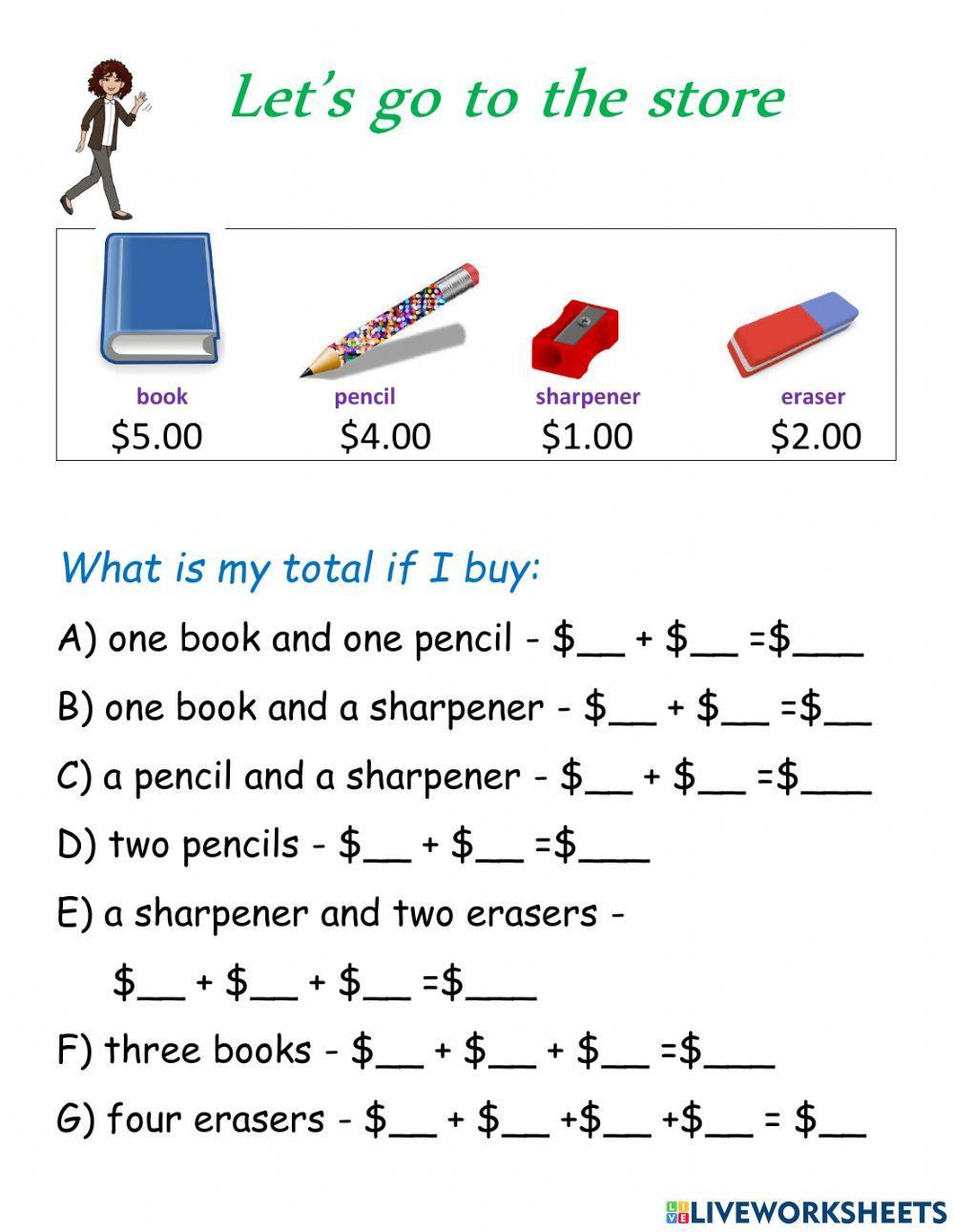Created by

MissMack
-
Math
-
Money
-
Age 4-7
-
level: Infant 1 and 2
-
English
Author's Instructions
Calculating the total cost of shop items totaling less than twenty dollars.
Created by

MissMack
-
Math
-
Money
-
Age 4-7
-
level: Infant 1 and 2
-
English
Author's Instructions
Calculating the total cost of shop items totaling less than twenty dollars.











